Seven Practical Steps to Create Truly Unique Content
 “After Camp and his friends spent $800 hiring a private driver, he wanted to find a way to reduce the cost of direct transportation. He realized that sharing the cost with people will make it affordable and his ideas morphed into Uber…”
And, thus, the first modern ride-hailing company was born. While several other ride-hailing companies have since been built, Uber still tops the list of ride-hailing companies in the world.
That’s the power of a truly unique idea. As it is in startups, so it is in marketing.
In marketing, a writer is a salesperson with a pen in hand. Charged with the responsibility of consistently bringing in new buyers and maintaining the relationship with existing ones, they cannot bore either of these two parties.
As David Ogilvy puts it, “You cannot bore people into buying your product,” and one thing about content is — once it becomes too typical — it becomes boring.
That being said, we all know that creating original content that gets the audience raving is not always easy. It’s an endless struggle and a battle to overcome so many hurdles that span a malignant writer’s block, finding the right idea, telling the right story, making it reasonable, and making it appealing to its target audience.
The million-dollar question is: how can you, a writer, create more masterpieces that stand out in today’s world of embarrassing similarities?
This piece will give you a step-by-step guide on how to create outstanding content regularly.
“After Camp and his friends spent $800 hiring a private driver, he wanted to find a way to reduce the cost of direct transportation. He realized that sharing the cost with people will make it affordable and his ideas morphed into Uber…”
And, thus, the first modern ride-hailing company was born. While several other ride-hailing companies have since been built, Uber still tops the list of ride-hailing companies in the world.
That’s the power of a truly unique idea. As it is in startups, so it is in marketing.
In marketing, a writer is a salesperson with a pen in hand. Charged with the responsibility of consistently bringing in new buyers and maintaining the relationship with existing ones, they cannot bore either of these two parties.
As David Ogilvy puts it, “You cannot bore people into buying your product,” and one thing about content is — once it becomes too typical — it becomes boring.
That being said, we all know that creating original content that gets the audience raving is not always easy. It’s an endless struggle and a battle to overcome so many hurdles that span a malignant writer’s block, finding the right idea, telling the right story, making it reasonable, and making it appealing to its target audience.
The million-dollar question is: how can you, a writer, create more masterpieces that stand out in today’s world of embarrassing similarities?
This piece will give you a step-by-step guide on how to create outstanding content regularly.
Seven Practical Steps to Create Truly Unique Content
Click To TweetFirst, Claim Your Editorial Calendar Template
Before you start creating unique content for your audience, you should make sure you have a solid content plan in place. That's why we're giving away this editorial calendar template so you can plan, create, and execute all your content marketing in one place. [tables of contents]What is Unique Content?
If we are going to be creating tons of unique content at the end of this piece, then we should have a common understanding of what unique content is.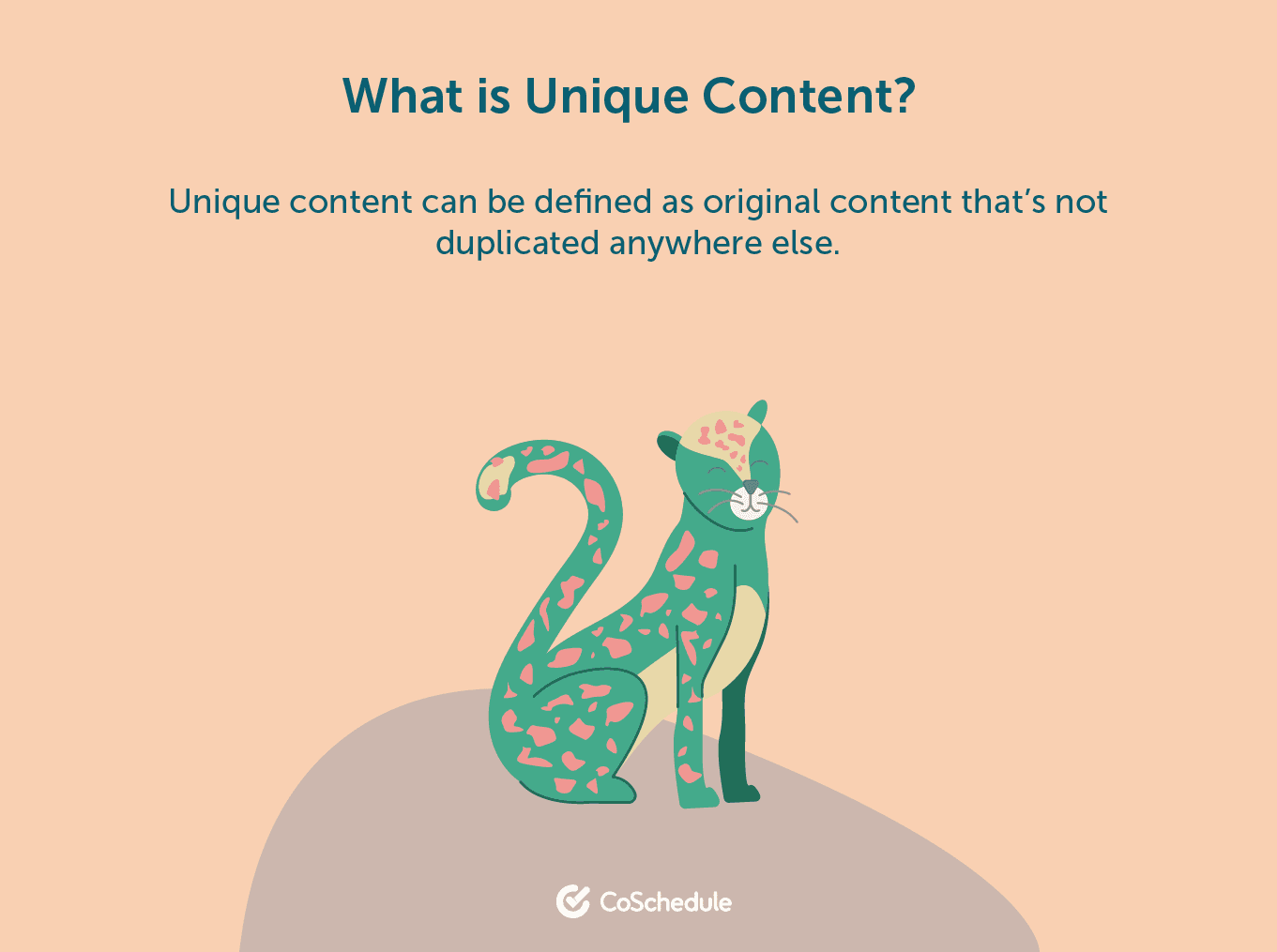 While this is a popular definition of the term, it undermines what our assignment entails as writers — especially in relation to content marketing. It shifts our mind from the fact that no content is original unless it teaches our audience something in which they did not know before. In another word, it should appear unique to your target audience.
The definition cited above wants us to create something more impressive, whereas unique content isn’t meant to be more impressive than the rest. It teaches, it engages, it delights, and above all, it gets clicks! It’s meant to be a substance on its own, specified, and made-to-order to speak to its own audience.
The first and the second law in The 22 Immutable Laws of Marketing applies here; be the first or set a new category in which you can be the first.
While this is a popular definition of the term, it undermines what our assignment entails as writers — especially in relation to content marketing. It shifts our mind from the fact that no content is original unless it teaches our audience something in which they did not know before. In another word, it should appear unique to your target audience.
The definition cited above wants us to create something more impressive, whereas unique content isn’t meant to be more impressive than the rest. It teaches, it engages, it delights, and above all, it gets clicks! It’s meant to be a substance on its own, specified, and made-to-order to speak to its own audience.
The first and the second law in The 22 Immutable Laws of Marketing applies here; be the first or set a new category in which you can be the first.
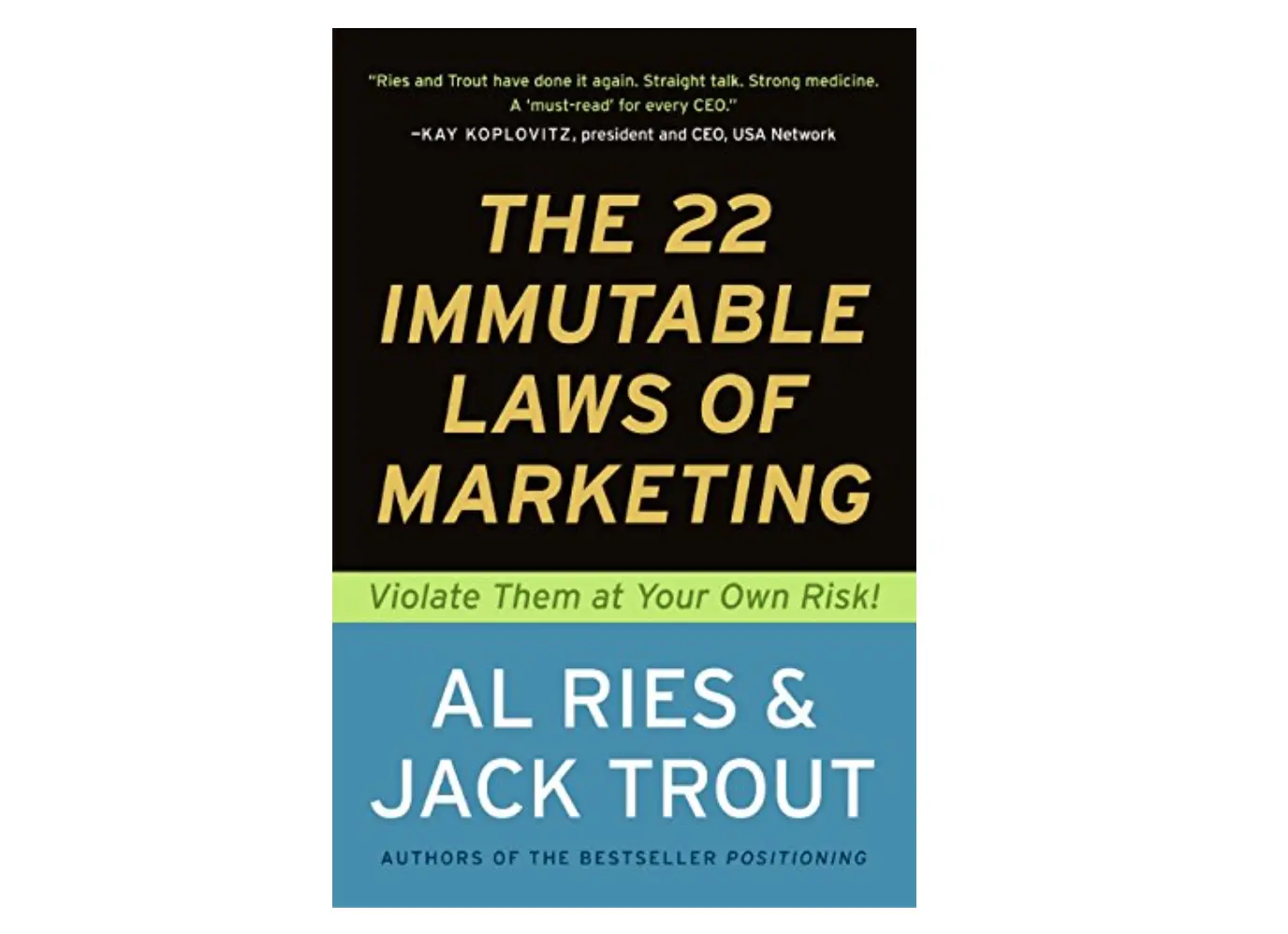 Buy on Amazon
Hence, unique content must be the first of its kind, and when it can’t be, it must choose a new area of focus in which it can be the first.
Buy on Amazon
Hence, unique content must be the first of its kind, and when it can’t be, it must choose a new area of focus in which it can be the first.
Why is Unique Content Disappearing?
These days, the number of self-ascribed writers that exist on the web isn’t equivalent to the number of great content we see on the Internet. Why is this happening, and why does every blog post, white paper, social media post, etc., seem to be treating the same topic over, and over, the same way? The reasons are not too far-fetched.Over-Reliance on Keyword Data
From identifying our audience size to knowing their queries and the keyword they are using to search, keyword research empowers us with a lot of useful data. However, over-reliance on them is the death of originality in content creation because your competitor has access to the same data as you. Research is necessary, but telling a story that resonates requires a human angle and intuition. When we base our decision on what to say strictly on data, we surrender our emotional strength to something that doesn’t have emotion, and emotion is the bridge that links a market and its buyers — as proved by several findings. A keyword tool knows what people are searching for, but it cannot tell which part of the subject they deeply care about. Only a healthy human mind can do that. The use of keyword data should never override our human intuition. Instead, it should be instrumental in determining whether an idea has an audience and, perhaps, how we shape it to please search engines. What this means is that the reason for writing articles should be more about what you, a human, have to say more than what keyword data dictates.Dependency on the Skyscraper Technique
In 2015, Brian Dean of Backlinko caught the marketing world by storm when he revealed a link-building strategy that helped double his organic traffic in 14 days. “The Skyscraper Technique,” he called it. He broke down the strategy into three steps: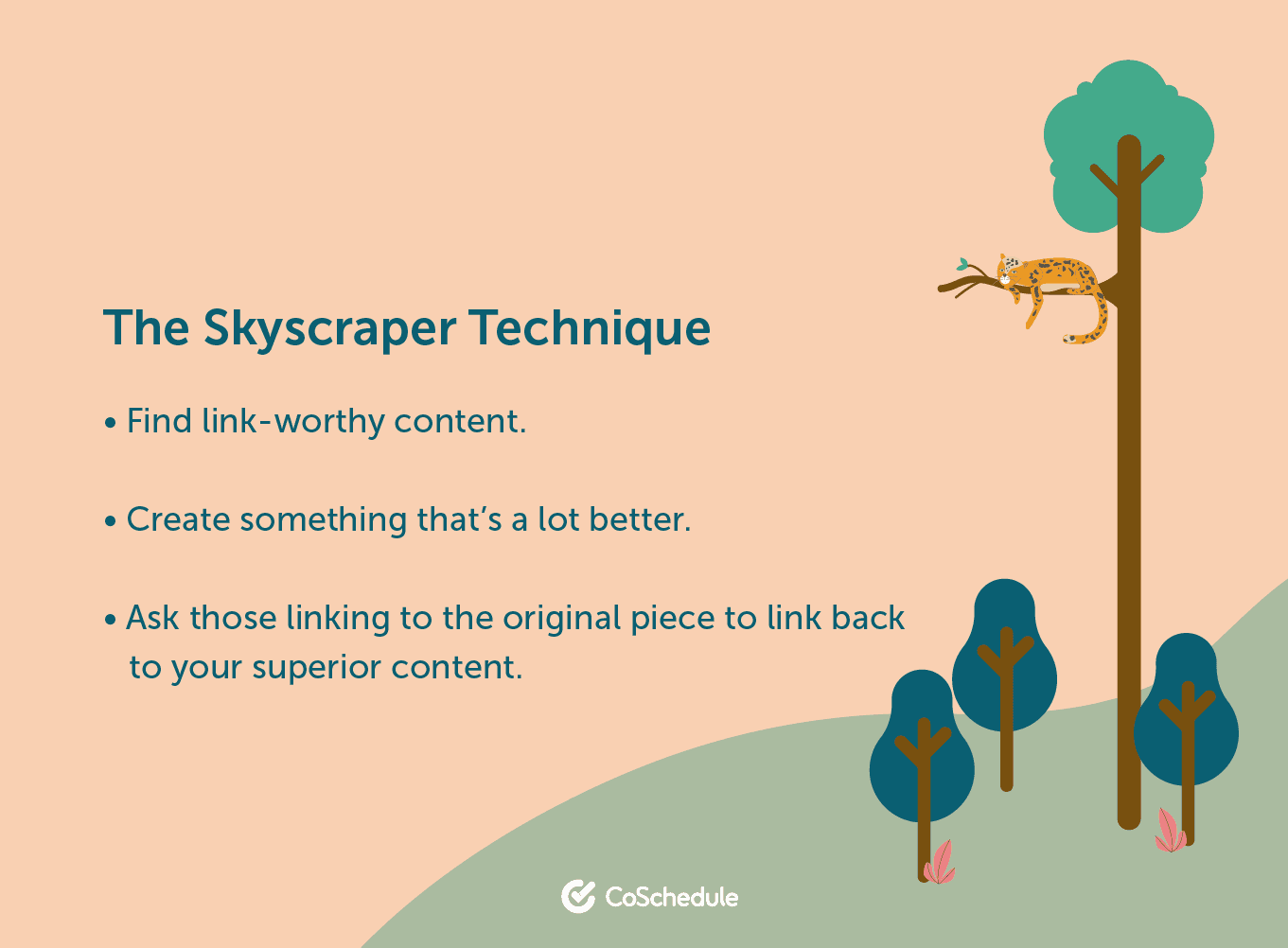 The Skyscraper Technique has become a standard among writers today, but its popularity is also its undoing — and a reason why you shouldn’t rely on it.
Once an influencer, like Brian Dean, mentions an idea, the end of that idea is near because virtually everyone knows about it immediately.
As a writer, before you write your next Skyscraper-technique-based article, why not ask:
The Skyscraper Technique has become a standard among writers today, but its popularity is also its undoing — and a reason why you shouldn’t rely on it.
Once an influencer, like Brian Dean, mentions an idea, the end of that idea is near because virtually everyone knows about it immediately.
As a writer, before you write your next Skyscraper-technique-based article, why not ask:
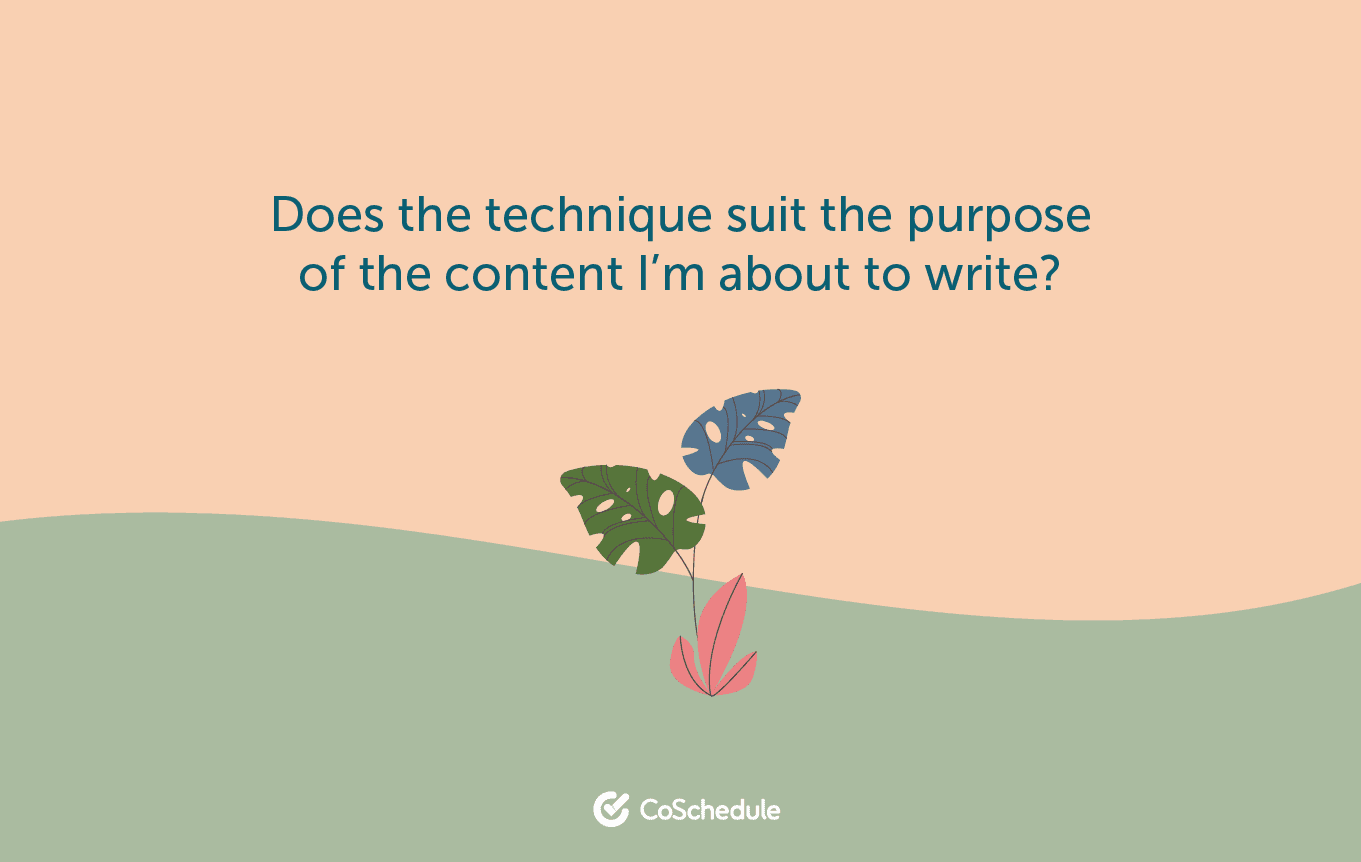
Over-Commercialization of Content Marketing
These days, it’s not uncommon to see articles that are meant to solve a problem but end up being unhelpful because they have something to sell you on. Brands in the SaaS industry are mostly guilty of these. Look at this piece about the upcoming Google Page Experience Update on Neil Patel’s blog. Nothing is inherently wrong with the article, but the author left out a lot of information and tools specified by Google and went on to articulate the use of his own app. Many content writers produce articles with this superficial interest, and in doing so, originality falls by the wayside.Laziness
Whether in copywriting, content marketing, or novel writing, there is no substitute for research and the ability to edit, but the ability to find a truly unique idea will always take the cake. Many articles that exist on how to write make it appear ridiculously easy, but this field is thick-studded with the sweat and blood of researchers who burn the midnight oil to create something which was not there before. If your content is paperweight in terms of ideas and handy information, your vapid adjectives and vocabulary cannot get you anywhere. The reign of listicles has created an avenue for every basic English speaker to claim writing abilities — even if all they do is join a string of words together and give it a title.What Can Writers Do to Create More Unique Content?
You’ve been advised to not limit yourself to keyword data and to not copy the Skyscraper Technique, so what should you do instead? Read on for seven steps you can always take to arrive at a content idea that isn’t generic.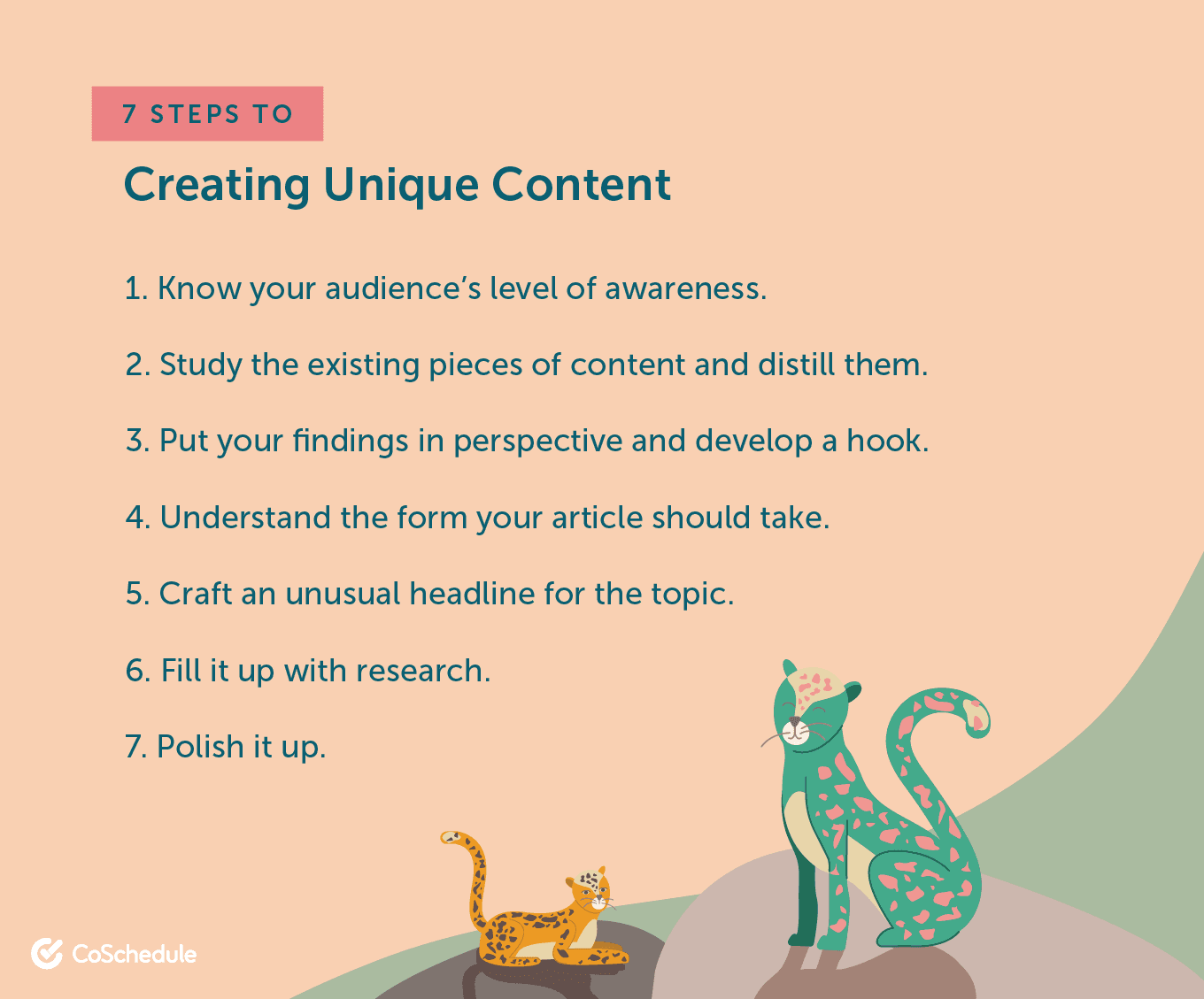
1. Know Your Audience’s Level of Awareness
At this stage in the life of content marketing, topics in all categories have been covered to the most minute of details, but every stage of knowledge we pass only brings us face-to-face with a new one. Unless you know how much your target audience knows prior to reading your content, there is no way you can establish what content will be unique and what content isn’t, since uniqueness is relative. Adapted from Eugene Schwartz’s five levels of market sophistication; as product consumers have awareness levels, so do content consumers. If you are charged with writing content for any audience in any category, and you don’t want to fall into the trap of repetition, then it will serve you if you can segment them by their level of awareness. Say you want to write in a saturated market like SEO, there are some questions you can ask which can help you steer clear of overused topics.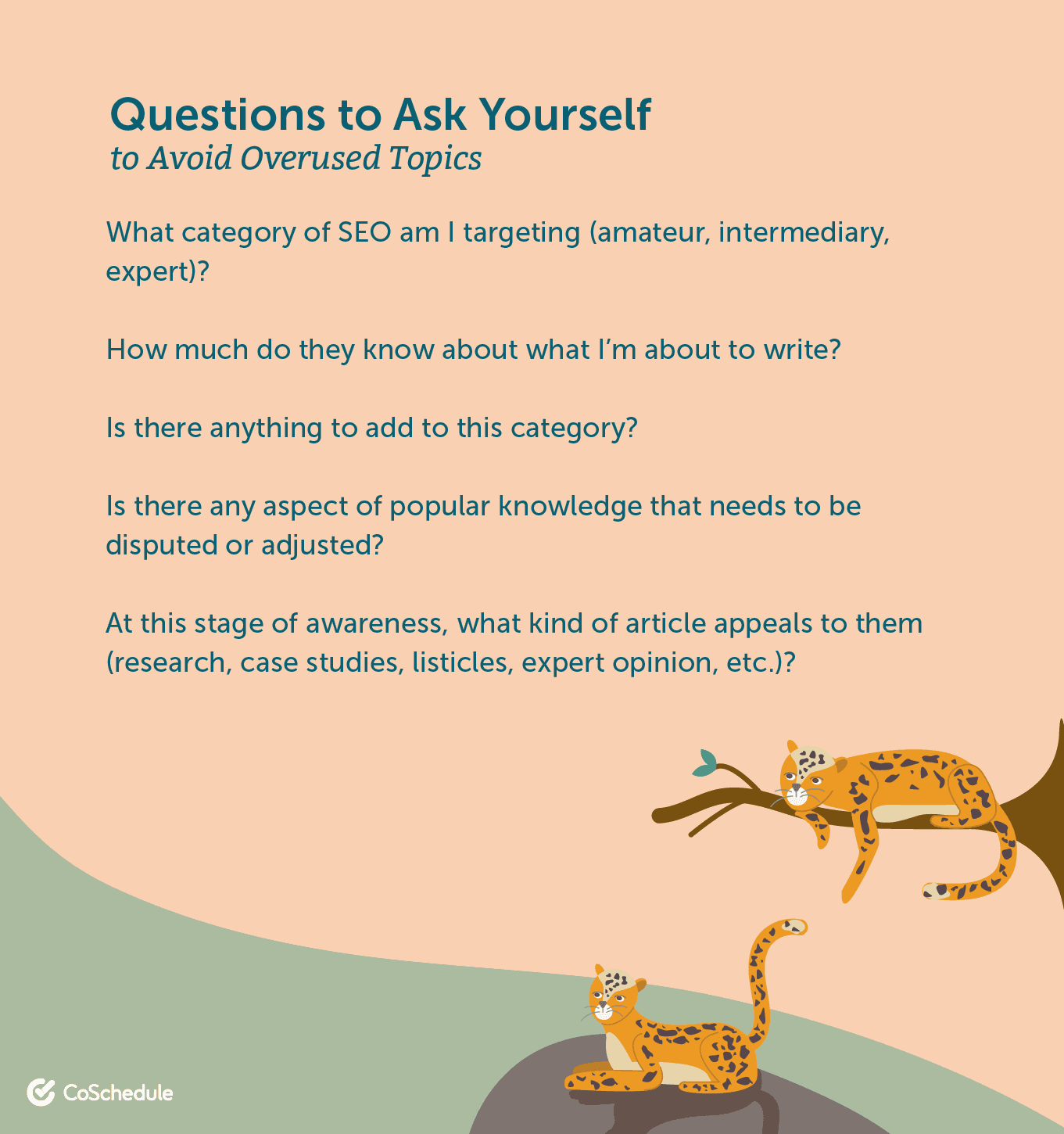 By asking these simple questions, you gradually remove your article from the crowd and turn it into something that will truly matter to people. Understanding your audience’s level of awareness will show you what to write about, but most importantly, it will show you what not to write about.
When you take anything that isn’t new out of the way, what you have left is originality.
By asking these simple questions, you gradually remove your article from the crowd and turn it into something that will truly matter to people. Understanding your audience’s level of awareness will show you what to write about, but most importantly, it will show you what not to write about.
When you take anything that isn’t new out of the way, what you have left is originality.
2. Study the Existing Pieces of Content and Distill Them
Now, having identified your audience’s level of awareness, it’s time to look into the bodies of knowledge that were available to them and distill those lessons. But, how can you know what a person knows or doesn’t know? It’s quite simple. When you did your awareness level segmentation, you identified what appeals to — or bothers — each segment. Find the publications they are likely to follow, and then begin your research. An entry-level SEO, for instance, will likely read Neil Patel’s blogs. This isn’t because he doesn’t teach experts, but because of his ability to simplify concepts. While an advanced-level SEO will normally read blogs like Moz, SEMRush, Ahrefs. As you have identified some of these blogs, here are three things you can do to quickly run through their content.Conduct Google Insite Search
If you want to see everything a blog has ever written on a subject matter without having to search manually or get cut off from a long list of content, Google Insite searches can be of great help to you. Let’s make an example of the CoSchedule blog. I know CoSchedule writes a lot about headlines, among other things. Now, I’m going to type “site:coschedule.com write headline”. You can replace CoSchedule with any website of your interest and “write headline” with your desired keyword or keyword phrase.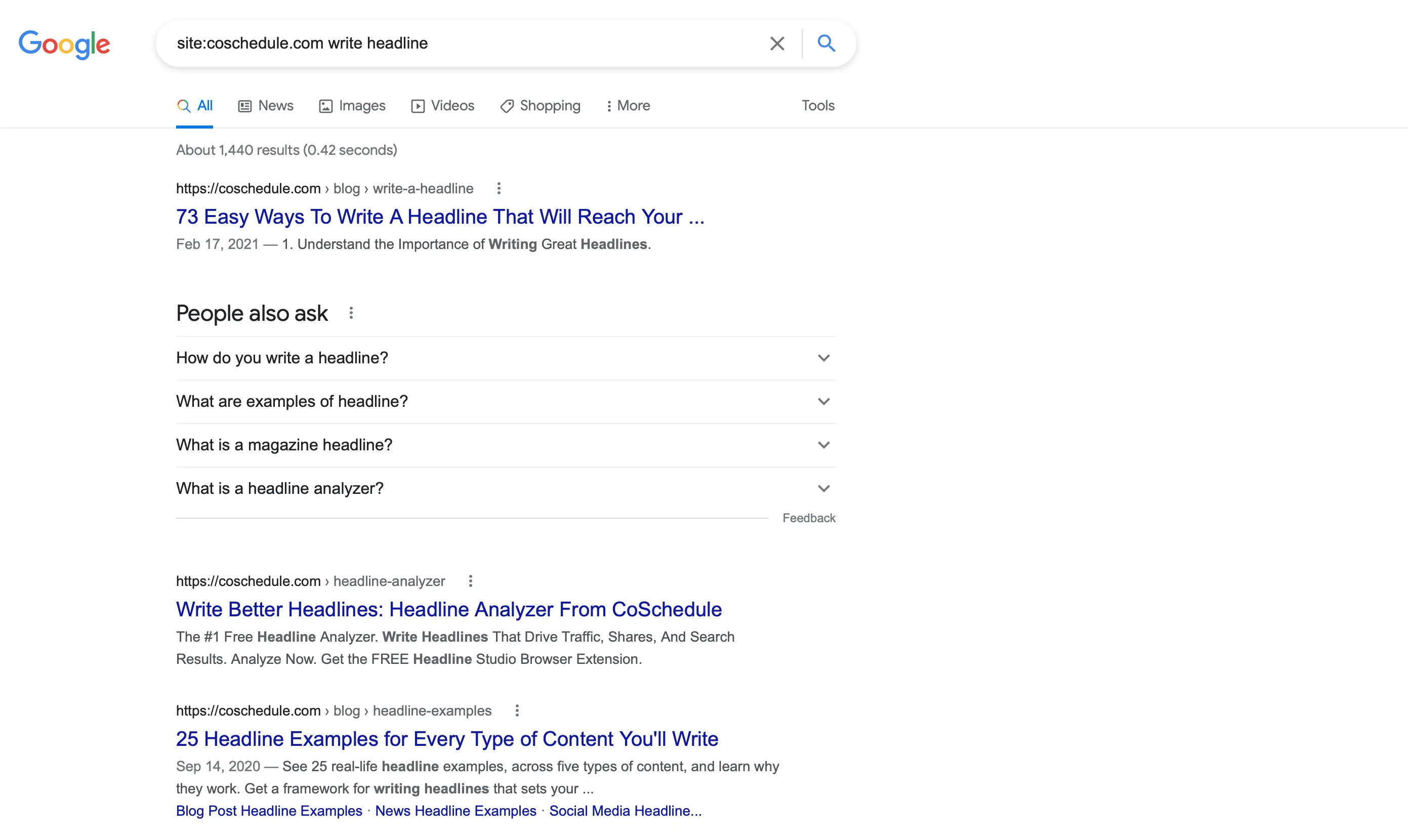 From this search, Google will list everything that’s covered in that blog about the topic on its SERP page for you.
With that, you have an opportunity to quickly glance through what’s available on their website in regards to your topic. Make a summary from it and wait for the next step.
From this search, Google will list everything that’s covered in that blog about the topic on its SERP page for you.
With that, you have an opportunity to quickly glance through what’s available on their website in regards to your topic. Make a summary from it and wait for the next step.
Ask Your Audience
If you know where they hang out, you can go there and post questions to them directly; and if you have their email address, that’s much better. You can create a survey using tools, like Typeform or Survey Monkey, to ask them where they are having challenges so you can use that finding as the basis for your writing. Source
Source
Check Comments Under Articles
Comments that readers make under blog posts are a gold mine for researchers. On several occasions, some readers who are smarter than the author even open a new perspective under the comment section. When you discover ideas like that, it can be a good starting point for your newest article. Having dug this far, it’s time to start juxtaposing your findings with what you want to write about and see if you truly have anything new to say.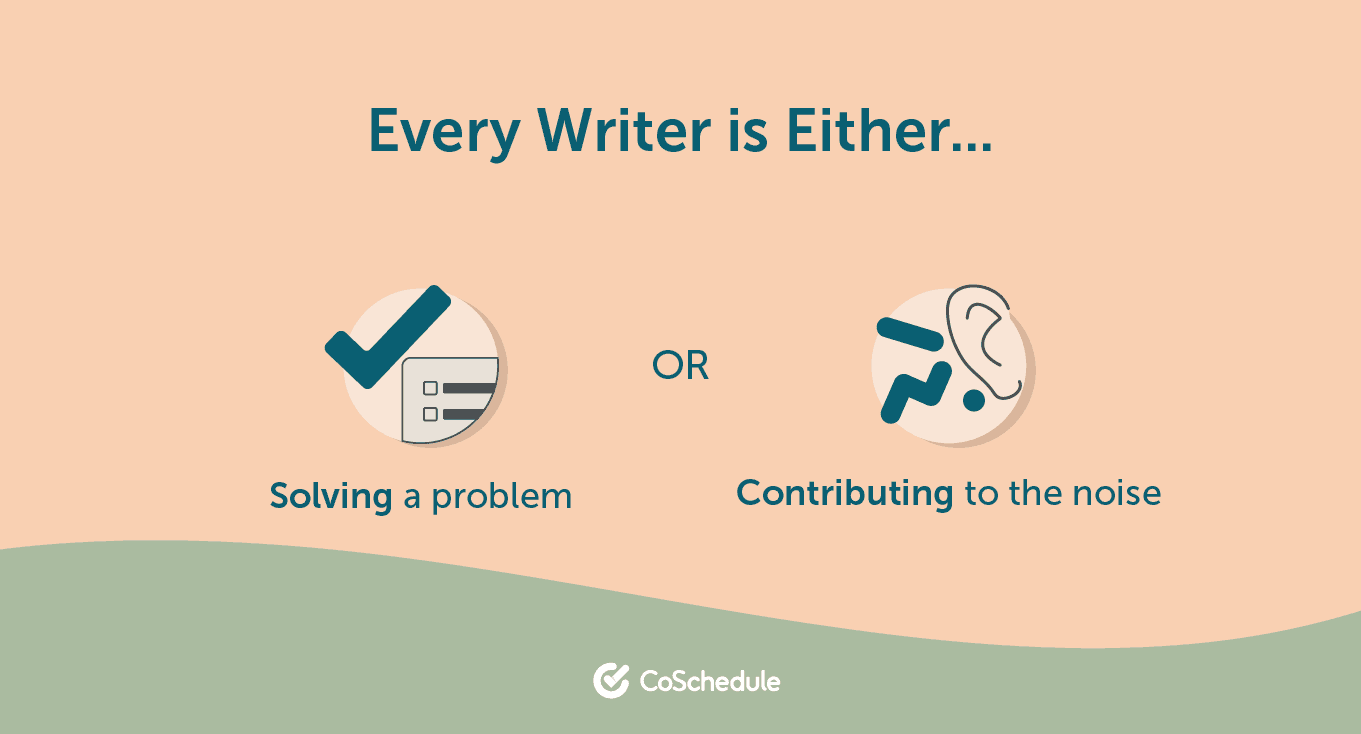 If after identifying your audience’s stage of awareness, you couldn’t find anything to add that will be beneficial to them, then it’s better to leave it that way and find something else to write about or maybe another category.
I understand that if this is a client’s work, you may not have the luxury of quitting altogether.
If after identifying your audience’s stage of awareness, you couldn’t find anything to add that will be beneficial to them, then it’s better to leave it that way and find something else to write about or maybe another category.
I understand that if this is a client’s work, you may not have the luxury of quitting altogether.
3. Put Your Findings in Perspective and Develop a Hook
By now, you have been through a lot to write your next masterpiece; you’ve identified who you are writing for, how much they knew about the topic, you’ve listened to their queries, and have seen the existing knowledge bodies. By this time, you must have seen where the dots aren’t connecting or where the facts are lacking or inadequate. Maybe it’s just something they’ve been doing that can now be done better than before. Take the Skyscraper Technique article by Brian Dean, for example. White hat link-building was a big issue with almost no easy way out. If Dean had written an article on how to “truly” build links, like the rest of his competitors were doing, no one would have batted an eyelid. Instead, he showed an example of getting it in a way that’s practical and that no one was doing before. As for your article, what’s going to be the hook? This is where your serious brainstorming session begins, and it never ever stops until you are convinced that you’ve found an idea that can hold your audience spellbound.4. Understand the Form Your Article Should Take
In the world of content marketing, there is more emphasis on listicles and how-to guides. There seems to be no difference between what was written for an expert and what was written for an amateur; everything either teaches a how-to or makes a list of some things you should know. Of course, these forms of content aren’t in any way bad, they’re just, on some occasions, unnecessary and irrelevant. While researching this article, I came across an interesting article on Neil Patel. He titled it “Why Data Alone Can’t Dictate Your Marketing Decision”. It’s unlike most articles you’d see on Neil Patel and other online marketing blogs, but it’s a helpful and incisive one that’s suited to an audience like myself. Source
The thing is, if he had written this as “10 Reasons You Shouldn’t Rely on Data for Your Marketing Decisions”, it would have come off as a typical one. Its title is the first thing that stood out to me because when I set out to see what has been said about reliance on keyword data, I wasn’t just looking for another article. I needed an expert who shares my bias or opposes it with sound arguments.
Titles, such as “10 Reasons...”, would have shown me that it’s another article by some rookie writer.
As you decide on what you want to say, if you are going to create unique content, then you need to make an informed decision about what form it should take, too (i.e. opinion, listicle, how-to, case study, report, etc.).
The profile you’ve created about your audience should help you decide.
Source
The thing is, if he had written this as “10 Reasons You Shouldn’t Rely on Data for Your Marketing Decisions”, it would have come off as a typical one. Its title is the first thing that stood out to me because when I set out to see what has been said about reliance on keyword data, I wasn’t just looking for another article. I needed an expert who shares my bias or opposes it with sound arguments.
Titles, such as “10 Reasons...”, would have shown me that it’s another article by some rookie writer.
As you decide on what you want to say, if you are going to create unique content, then you need to make an informed decision about what form it should take, too (i.e. opinion, listicle, how-to, case study, report, etc.).
The profile you’ve created about your audience should help you decide.
5. Craft an Unusual Headline for the Topic
The praise for headlines goes on. From generation to generation of writers, there is a consensus among experts of the written word that your headline is the most essential aspect of your job.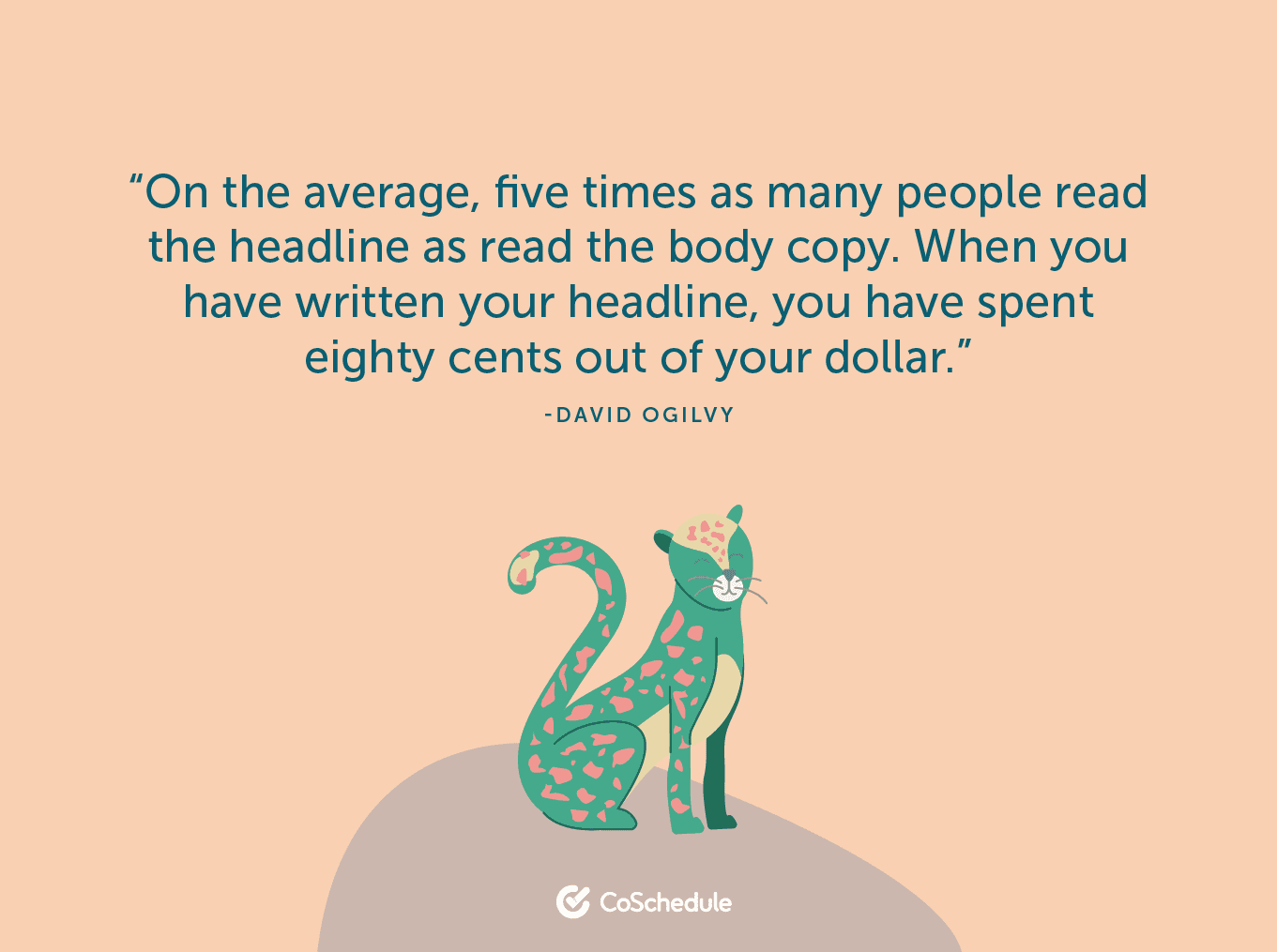 This word from the father of advertising himself is a time-tested truth. Whether in journalism, copywriting, social media posts, or traditional ads, headlines decide whether your copy lives or dies.
You may not need to go as far as the Burger King “Women Belong in the Kitchen” Tweet, but you should stand out.
On my blog, I have a guide on how to start a sports blog, and it ranks on the first page of SERPs. However, there is a little problem: if you search for this keyword on Google, you’ll see a lot of content on the same topic with similar titles. If your content lives in such a generic world, your chances of getting noticed stand at 0/100.
If you are in doubt, tools like CoSchedule Headline Analyzer can help put your headline to test.
This word from the father of advertising himself is a time-tested truth. Whether in journalism, copywriting, social media posts, or traditional ads, headlines decide whether your copy lives or dies.
You may not need to go as far as the Burger King “Women Belong in the Kitchen” Tweet, but you should stand out.
On my blog, I have a guide on how to start a sports blog, and it ranks on the first page of SERPs. However, there is a little problem: if you search for this keyword on Google, you’ll see a lot of content on the same topic with similar titles. If your content lives in such a generic world, your chances of getting noticed stand at 0/100.
If you are in doubt, tools like CoSchedule Headline Analyzer can help put your headline to test.
 Source
The bottom line is: make your headline a purple cow.
Source
The bottom line is: make your headline a purple cow.
6. Fill It Up With Research
Now, since you’ve gotten your audience interested and hooked them into your article, remember that arguments based on scientific conclusions make life easy. As a writer, your job is to educate your readers and help them make informed decisions. Unless you are the absolute expert in your field (think Stephen King talking about writing), your unsubstantiated claims will verge on the ridiculous. Not only that, but research arms you with interesting angles and facts which, in turn, saves your audience from having to look further. Findings exist almost in an infinite amount these days. Use them to establish authority in your writing. Here are some tips to dig out important facts and findings when conducting your research.Start With Your Hypothesis
When writing on a particular subject, your first assignment is to establish your hypotheses, and then begin to probe them. Once you put down your thoughts...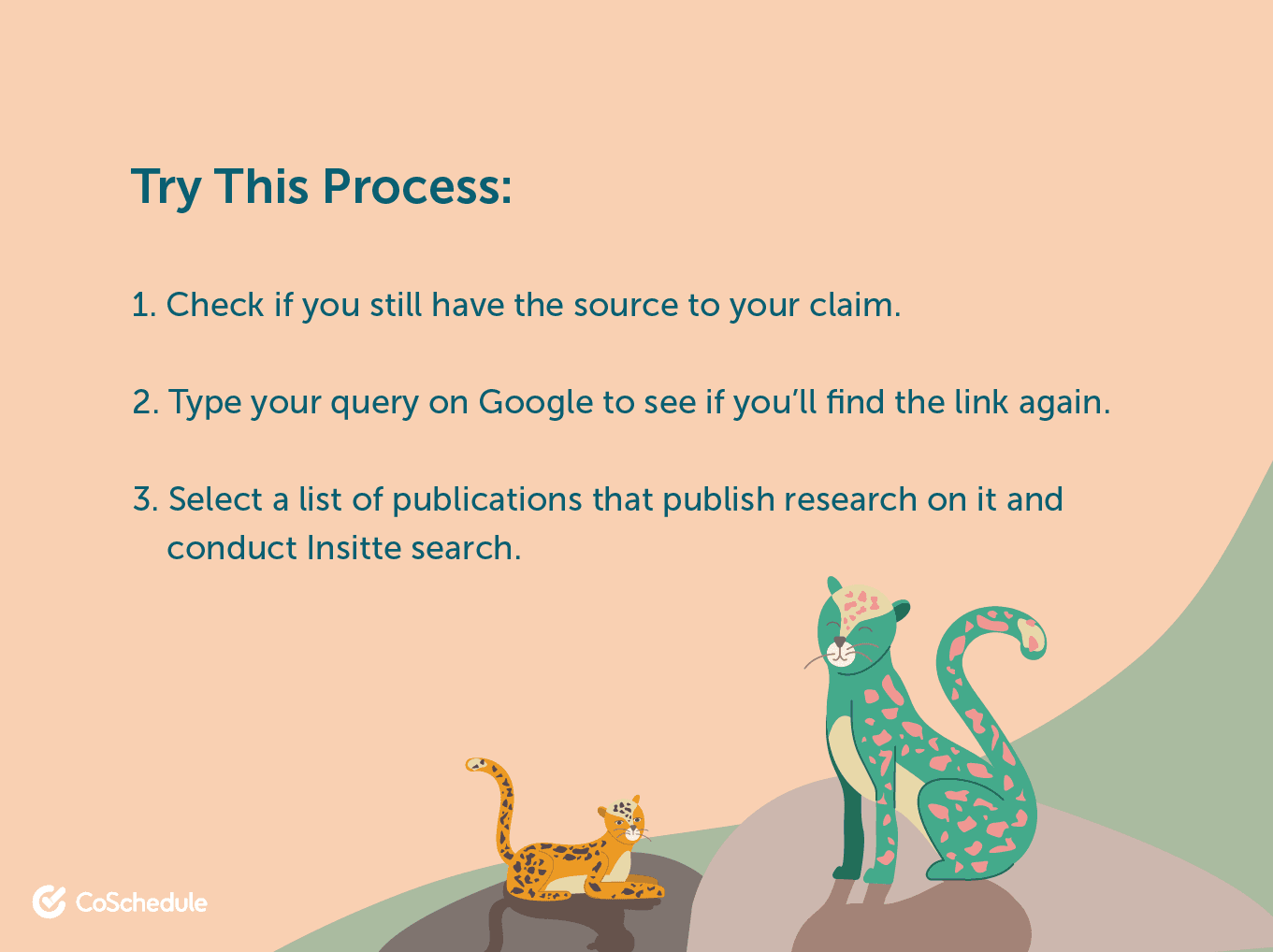
Use a Multi-Resource Approach
In an online world where editors want every finding and piece of information to be linked back to, it’s easy to get carried away and forget there is much more to research than the web. For example, some of the tips I shared in this piece I learned from reading books. When you are in doubt, it’s perfectly normal to go back to journals, books, and any other source that may not be available online. If there is anything you need to find, and you know it’s in a book offline, don’t hesitate to check and mention it.Google Search
Some publications conduct their own research, some get to the research a lot earlier than you could, and some purchase expensive resources on data (e.g. a subscription to Statista). When you Google-search some of the questions you have, it’s likely that you’d find interesting and fresh posts on top websites. You can use Google to your advantage when making research for a new piece.Double-Check Your Sources
Sometimes, confirmation bias may set in and stand between you and clarity. As such, when conducting your research, don’t just pick findings from any source you find; double-check to see if they have the authority to make assertions in that area.7. Polish It Up
In the end, there is no point in a good article that’s unintelligible or arrhythmic. If you read this far, it’s because you enjoy the flow and the turns of phrases. So, when you have delivered your content’s core message to the best of your ability, it’s time to toss it aside and do some other things, then go back to it hours later to polish it up. How do you polish content? Let’s make a list of steps that can help you burnish your piece.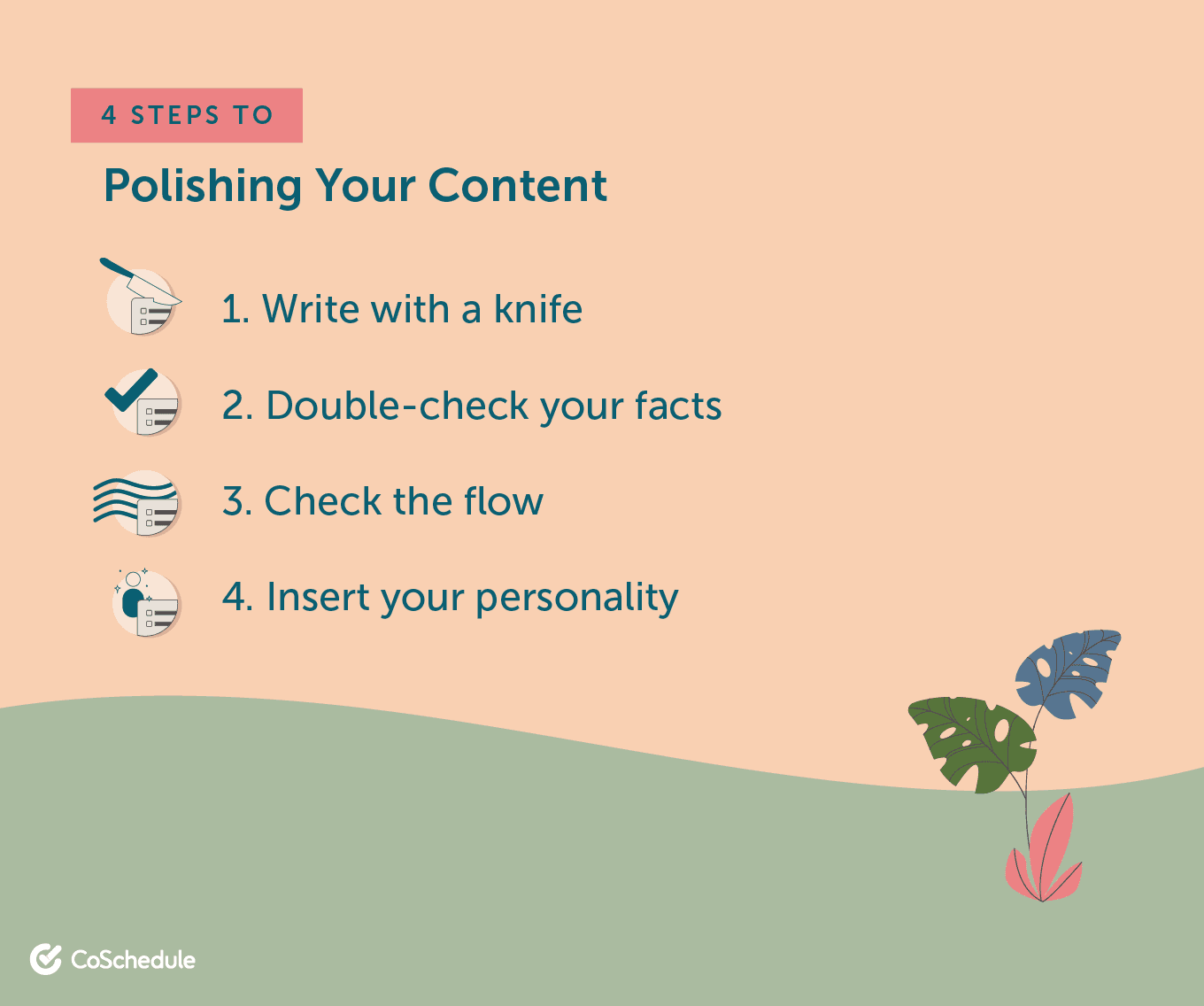
Write With a Knife
If you got into writing like many of us did, some fancy words are probably still stuck up your brain. They tend to come out even when you don’t invite them, but for your own sake, cut them out. It isn’t just the fancy vocabularies, though. Edit out every unnecessary adjective and idioms as well. They are of little value.Double-Check Your Facts
Facts are everywhere, but whatever facts you have, be sure to double-check — just to be on the safer side.Check the Flow
Some articles are badly disjointed, not necessarily in terms of information sequence, but also in terms of transition from sentence to sentence and paragraph to paragraph. Once your article is concluded, go over it and read it — probably, out loud — to yourself. See how it feels to listen to, whether it’s easy to follow through, and if it’s easy to understand.Insert Your Personality
Unless otherwise stated, write like you would speak to your close friend. The intention is to communicate, not to sound fanciful. If you can insert your personality into your writing and give it a human face, you’d win the admiration of your readers.Examples of Unique Content
Finally, let’s jump into some real-life, quality content examples that hone in on being as unique as possible.Real-life, quality content examples that hone in on being as unique as possible.
Click To Tweet“The Skyscraper Technique” by Brian Dean
As the SEO world continued to scurry for the best tips to get backlinks, Brian Dean was busy reverse-engineering what was available online. His experiment must have led him to discover that if you can provide a better reference for blog owners, they are more likely to refer to it. That was a new discovery that year, and the article remains a point of reference to this day because of its originality. Have you discovered a new hack in your industry? That would make for a unique piece of content.“7 Emerging Technologies in SEO and Their Applications” by Abdul Ganiy Shehu
 Source
As you already know, the SEO world is constantly shifting. What holds high ground today may lose it tomorrow.
The only way to stay ahead is to always keep abreast of emerging technology, and Abdul Ganiy Shehu made some important revelations in this post, which makes it unique to the SEO audience.
Source
As you already know, the SEO world is constantly shifting. What holds high ground today may lose it tomorrow.
The only way to stay ahead is to always keep abreast of emerging technology, and Abdul Ganiy Shehu made some important revelations in this post, which makes it unique to the SEO audience.
“Why B2B marketers need to create less top of funnel content” by Ali Faagba
 Source
“You have been doing B2B content marketing wrong all these years!”
If you are a B2B marketer, this kind of article will challenge you, and that seems to be what Ali Faagba did in the above post. It isn’t a typical “100 B2B content marketing strategy” you’ll see online, which makes it one worth reading.
Source
“You have been doing B2B content marketing wrong all these years!”
If you are a B2B marketer, this kind of article will challenge you, and that seems to be what Ali Faagba did in the above post. It isn’t a typical “100 B2B content marketing strategy” you’ll see online, which makes it one worth reading.
Harry’s Marketing Examples
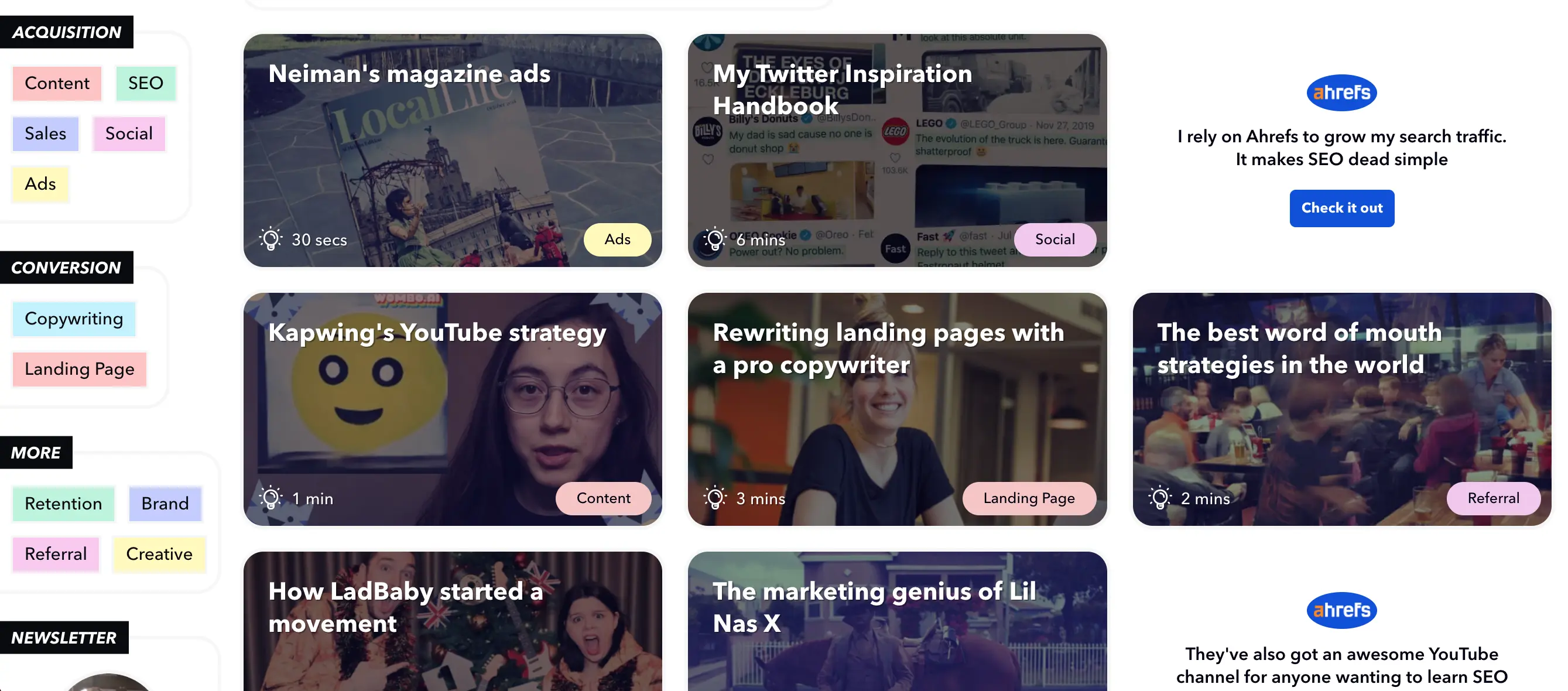 Source
Less than two years ago, an English man named Harry started a writing series that strictly focuses on marketing examples from successful companies.
Every single piece of content he writes teaches the same thing: copywriting. However, what’s unique about Harry’s content isn’t the topic he covers, but how he does it and what he does with it.
Throughout Harry’s website, there is no single post on how to write copies, just marketing examples analyzed under the lens of a copywriter. Yet, those posts pass all the value you’ll need to see in any post, if not more.
Source
Less than two years ago, an English man named Harry started a writing series that strictly focuses on marketing examples from successful companies.
Every single piece of content he writes teaches the same thing: copywriting. However, what’s unique about Harry’s content isn’t the topic he covers, but how he does it and what he does with it.
Throughout Harry’s website, there is no single post on how to write copies, just marketing examples analyzed under the lens of a copywriter. Yet, those posts pass all the value you’ll need to see in any post, if not more.
Swiped.co
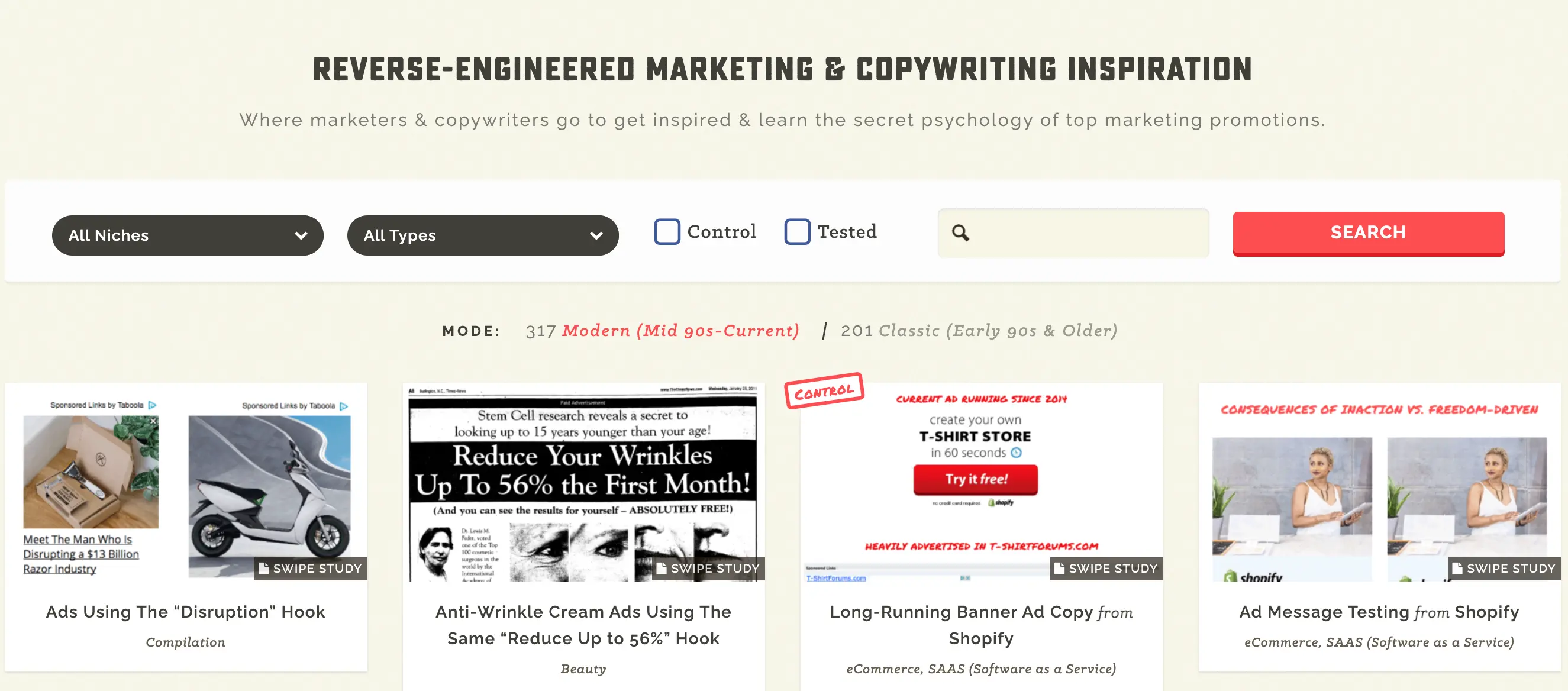 Source
How would you like to see copies of direct response advertising written by some of the world’s greatest advertisers of all time in their original forms? They can serve as inspiration for your own copy, right?
For Swiped.co, that’s the only focus. You can hardly type in any of the classical advertising headlines on Google without Swiped.co being among the first results.
This isn’t like anything you see elsewhere; just the classical copies or nothing.
Source
How would you like to see copies of direct response advertising written by some of the world’s greatest advertisers of all time in their original forms? They can serve as inspiration for your own copy, right?
For Swiped.co, that’s the only focus. You can hardly type in any of the classical advertising headlines on Google without Swiped.co being among the first results.
This isn’t like anything you see elsewhere; just the classical copies or nothing.


